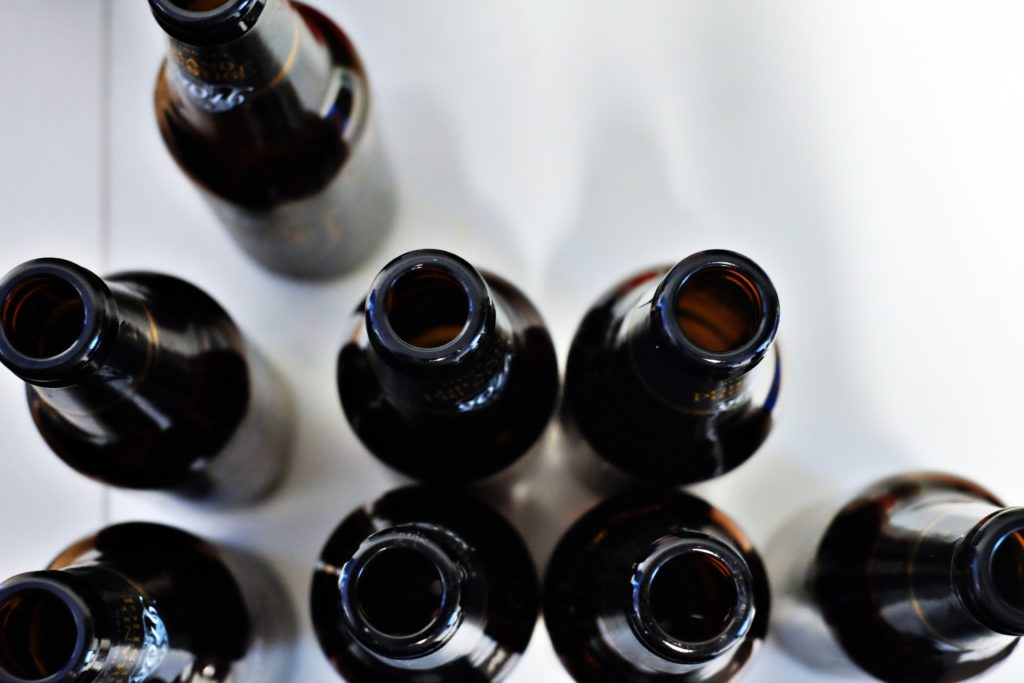What is Alcohol Poisoning?
Alcohol Poisoning occurs when a person drinks high levels of alcohol in a short period of time. The body cannot process the alcohol fast enough for the liver to filter it out of the bloodstream. A condition in which a toxic amount of alcohol has been consumed, usually in a short period of time. The affected individual may become extremely disoriented, unresponsive, or unconscious, with shallow breathing. Because this kind of poisoning can be deadly, emergency treatment is necessary.
Every time you drink alcohol, your liver has to filter it out of your blood. Alcohol is absorbed quickly into your body, but it can only process around 1 unit of alcohol an hour. Poisoning by alcohol can also occur if a person drinks household products that contain alcohol. Children sometimes drink these accidentally. The amount of alcohol in your bloodstream, known as your blood alcohol concentration (BAC), will rise.

Alcohol Poisoning BAC
The stages of intoxication differ from person to person because they’re based on age, sex, weight, and other factors. But generally, the seven stages of alcohol poisoning and their symptoms include the following:
1. Sobriety or Low-Level Intoxication
If a person has consumed one or fewer drinks per hour, they’re considered to be sober, or low-level intoxicated. At this stage of intoxication, the person’s behavior will be normal with no visible signs of intoxication, such as slurred speech or delayed reaction time. Their blood alcohol content (BAC), which measures how much alcohol is in the bloodstream, will be very low at 0.01 to 0.05 percent.
2. Euphoria
If a person has generally consumed two to three drinks as a man or one to two drinks as a woman in an hour, they’ll enter the euphoric stage of intoxication.
Symptoms include:
- A delayed reaction time
- Decreased inhibitions
- An increase in chattiness and confidence
Most people call this stage of intoxication being “tipsy.” A person’s BAC at this stage might range from 0.03 to 0.12 percent. Note that a BAC of 0.08 percent is the legal limit of intoxication in the United States. A person can be arrested for driving with a BAC above this limit.
3. Excitement
At this stage, a man might have consumed three to five drinks in an hour, or two to four drinks for a woman. At this time, a person will begin to experience emotional instability and a significant loss of coordination.
Symptoms include:
- A loss of judgment and memory
- Vision problems
- Loss of balance
- Drowsiness
A person will appear visibly “drunk” at this stage. They’ll have a BAC of 0.09 to 0.25 percent.
4. Confusion
If a man consumes more than five drinks or a woman more than 4 drinks in an hour, they’ll enter the next stage of intoxication: confusion. This stage of intoxication is marked by emotional outbursts and a major loss of coordination.
The person may not be able to stand up, may stagger when walking, and will likely be extremely confused about what’s going on. People in this stage of intoxication are very likely to forget things happening around or to them. They might experience an alcohol blackout without actually losing consciousness and may not be able to feel pain. This makes them at risk of injury. At this stage, a person’s BAC is very high. It’ll range from 0.18 to 0.30 percent.
5. Stupor
At this stage, a person no longer responds to the things happening around or to them. A person won’t be able to stand or walk. They may completely pass out or lose control over their bodily functions, becoming incontinent or vomiting uncontrollably.
They may also experience seizures or have blue-tinged or pale skin. Their breathing and gag reflexes will likely be impaired. This stage can be very dangerous and even fatal if a person chokes on their vomit or becomes critically injured. Any of these symptoms are signs that immediate medical attention is necessary. At this stage, a person’s BAC will range from 0.25 to 0.4 percent.
6. Coma
This stage is extremely dangerous. A person’s breathing and blood circulation will be extremely slowed. Their motor responses and gag reflexes are nonfunctional, and their body temperature drops. A person at this stage is at risk of death. Their BAC will measure 0.35 to 0.45 percent. Emergency medical attention is necessary at this point to avoid death and severe health problems.
7. Death
At a BAC of 0.45 percent or above, a person is likely to die from alcohol intoxication. It may seem like a person has to drink a lot to get to this stage. But if a person drinks very quickly, they can get to this stage before long. The Centers for Disease Control and Prevention estimates excessive alcohol use causes approximately 88,000 deaths annually in the United States.
The Dangers of Alcohol
The number of deaths due to Alcohol Poisoning in the US is alarming. According to the Center for Disease Control and Prevention, on average, 6 people died every day from Alcohol Poisoning in the US from 2010 to 2012. Very high levels of alcohol in the body can shut down critical areas of the brain that control breathing, heart rate, and body temperature, resulting in death. Poisoning by alcohol, deaths affect people of all ages but are most common among middle-aged adults and men. About 76% of those who die from alcohol poisoning are men.
There are 2,200 alcohol poisoning deaths in the U.S. each year:
- Most people who die from Alcohol Poisoning are between the ages of 35-64 years old
- Most people who die from this condition are men
- Most Alcohol Poisoning deaths are among non-Hispanic whites. Although a smaller share of the US population, American Indians/Alaska Natives have the most alcohol poisoning deaths per million people of the races.
- Alaska has the most Alcohol Poisoning deaths per million people, while Alabama has the least
- Alcohol dependence (alcoholism) was identified as a factor in 30% of alcohol Poisoning Deaths

Binge drinking can lead to death from alcohol poisoning:
- Binge drinking (4 or more drinks for women or 5 or more drinks for men in a short period of time) typically leads to a blood alcohol concentration (BAC) that exceeds 0.08 g/dL, the legal limit for driving in all states
- US adults who binge drink consume an average of about 8 drinks per binge, which can result in even higher levels of alcohol in the body
- The more you drink the greater your death risk.
Alcohol Poisoning Symptoms
Signs and symptoms of alcohol poisoning include:
- Confusion
- Severely slurred speech
- Loss of coordination
- Vomiting
- Irregular or slow breathing
- Pale or blue-tinged skin caused by low body temperature (hypothermia)
- Being conscious but unresponsive (stupor)
- Passing out
If you suspect someone you love is suffering from Alcohol Poisoning, dial 911 immediately. While you wait, these are a few things you can do:
- Try to keep them sitting up and awake
- Give them water if they can drink it
- If they have passed out, lie them on their side in the recovery position and check they’re breathing properly
- Keep them warm
- Stay with them and protect their head
- Never leave a person alone to “sleep it off”.
Short-Term Health Risks of Drinking Alcohol
Excessive alcohol use has immediate effects that increase the risk of many harmful health conditions. These are most often the result of binge drinking and include the following:
- Injuries, such as motor vehicle crashes, falls, drownings, and burns
- Violence, including homicide, suicide, sexual assault, and intimate partner violence
- Alcohol poisoning, a medical emergency that results from high blood alcohol levels
- Risky sexual behaviors, including unprotected sex or sex with multiple partners. These behaviors can result in unintended pregnancy or sexually transmitted diseases, including HIV
- Miscarriage and stillbirth or fetal alcohol spectrum disorders (FASDs) among pregnant women
Alcohol Poisoning Risk Factors
The standard drink in the United States contains 0.6 ounces of pure alcohol. This amount of alcohol is generally found in:
- 12 ounces of beer with a 5 percent alcohol content
- 8 ounces of malt liquor at a 7 percent alcohol content
- 5 ounces of wine at a 12 percent alcohol content
- 1.5 ounces of 80-proof distilled spirits or liquor (such as rum, vodka, or whiskey) at a 40 percent alcohol content

Alcohol in the form of ethanol (ethyl alcohol) is found in:
- Alcoholic beverages
- Some household products like mouthwash and cooking extracts
- Medications
Alcohol intoxication occurs from drinking too much alcohol in a short period of time.
Some people are more at risk of alcohol intoxication than others. Factors affecting your risk of alcohol intoxication include:
- Your body type and weight: Larger people absorb alcohol more slowly than smaller people.
- Your health status: Having certain health issues can put you at greater risk of alcohol poisoning.
- Whether or not you’ve eaten: Having food in your stomach before drinking can slow your body’s absorption of alcohol.
- Whether you’ve combined alcohol with other drugs: Consuming certain drugs before drinking can increase your risk of alcohol poisoning.
- The percentage of alcohol in your drinks: Drinks with a higher percentage of alcohol will raise your BAC more quickly than drinks with a lower percentage of alcohol.
- Your rate and amount of alcohol consumption: Drinking many drinks quickly puts you at risk of alcohol poisoning.
- Your level of alcohol tolerance: People who regularly drink are better able to tolerate alcohol than people who are only occasional drinkers.
Alcohol Poisoning Treatment
After an episode of alcohol intoxication, it takes time to recover. The person will be hospitalized until their vital signs return to normal. This may take days, up to weeks. During recovery, a person may experience a depressed mood and appetite, discomfort, and memory problems. Even after a person is released from hospital care, it can take up to a month to feel normal again. The good news is that it’s possible to survive alcohol intoxication if appropriate medical treatment is given promptly.
Reclaim your life from Alcohol Use Disorder, We Level Up Washington
Experiencing too many alcohol poisoning episodes can indicate Alcohol Use Disorder. Alcoholism is a severe disease that should not be taken lightly. We Level Up treatment center can provide you, or someone you love, the tools needed to recover from alcoholism with professional and safe treatment. Feel free to call us to speak with one of our counselors. Our specialists know what you are going through. Please know that each call is private and confidential.
We Level Up Washington Mental Health Center: Primary Mental Health Treatment with Secondary Co-Occurring Treatments
The We Level Up Washington primary mental health center stands ready to help. Offering secondary treatment programs for underlying conditions like alcohol addiction that frequently fuels harmful behaviors. Taking that first step to get the professional support you need can be life-transforming.
We know how mental health disorders and secondary co-occurring substance abuse diagnoses directly affect one another. The We Level Up Washington treatment center provides recovery programs through science-based mental health treatments that can help you feel better. Call us now for a free mental health evaluation!
Inpatient medical detox and residential primary addiction treatment may be available at affiliated facilities at other We Level Up Treatment Centers locations beyond the Washington treatment facility.